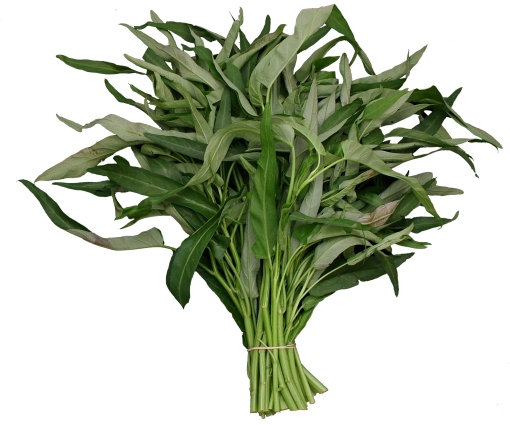Note from Ms. Yummy~licious:
Price ranging from below RM5/ stalk
Note from Wiki:
The vegetable is a common ingredient in Southeast Asian dishes. In Singapore, Indonesia and Penang, the leaves are usually stir fried with chile pepper, garlic, ginger, dried shrimp paste (belacan/terasi) and other spices. In Penang and Ipoh, it is cooked with cuttlefish and a sweet and spicy sauce. During the Japanese Occupation of Singapore in World War II, the vegetable grew remarkably well and easily in many areas, and become a popular wartime crop.
Penang Kangkung BlachanIn Chinese cuisine, there are numerous ways of preparation, but a simple and quick stir-fry either plain or with minced garlic is probably the most common. In Cantonese cuisine, a popular variation adds preserved beancurd - a method known in the Mandarin language as furu (pickled tofu). In Hakka cuisine, yellow bean paste is added, sometimes along with fried shallots. The vegetable is also extremely popular in Taiwan, where it grows well.
In Thailand it is frequently stir fried with oyster sauce and shrimp paste. It can be eaten raw with Lao green papaya salad.
In Vietnam, it once served as a staple vegetable of the poor (known as rau muống). In the south, the stems are julienned into thin strips and eaten with many kinds of noodles, and used as a garnish as well. Over the course of time, Ipomoea aquatica has developed into being an ingredient for many daily vegetable dishes of Vietnamese cuisine as a whole. Rau muống is one of the tastes that remind Vietnamese people of their simple and peaceful rural hometown life.
Source: http://en.wikipedia.org/wiki/Ipomoea_aquatica
Recipe/s that use/s this item:
Stir Fry Water Convolvulus With Belacan















0 comments:
Post a Comment